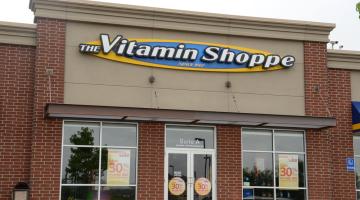
Retail’s Big Show is the only place where the most influential retail leaders from around the world gather to share insights and expertise. When COVID-19 disrupted the industry, retailers responded swiftly to take care of employees, consumers and their communities while demonstrating the industry’s resiliency and essential role in our economy.
Retail’s largest event went virtual this year, with NRF 2021: Retail’s Big Show – Chapter 1 taking place January 12–14, 19 and 21–22. More than 330 speakers participated in 100 sessions to share lessons learned from the past year and thoughts on the optimistic road ahead.
Here are top themes and takeaways from NRF 2021: Retail’s Big Show – Chapter 1.
Nourishing team wellness builds a healthy retail future
As a consumer-centric industry that exists to meet the needs of those in our communities, retail begins with people. Over the past year, personal health has become paramount and the changing dynamics of consumers’ lives have put a strain on retailers’ teams, said Chewy CEO Sumit Singh during a session on how retailers comforted consumers during the pandemic.
“The strength of an organization’s culture was called to task during the last four quarters,” Singh said. Chewy reevaluated team dynamics and discovered a hybrid model of remote and in-person work worked best for its team to accommodate shoppers. Sonic Drive-In President Claudia San Pedro said her team focused on staying up-to-date on the latest CDC guidelines to ensure front-line employees were taken care of.
Interpreting customer data is science & art. Authenticity > metrics. Ex: hire engaged professionals who will enjoy communicating with customers, then empower them! Customers who engage in our service have a higher LTV than customers who haven’t. That’s our North Star. #NRF2021
— Sumit Singh (@sumitsingh) January 19, 2021
As the personification of a retailer’s brand, front-line employees are a competitive advantage in the industry. Reassessing roles became critical this year as employees took on additional roles to ensure the safety of themselves and other customers, including training in conflict prevention and safe health practices. With these added responsibilities on employees, the business case for investing in workplace wellness became a priority.
Social responsibility and sustainability are essential
Retailers are aligning corporate values with intentional policies and practices that encourage diversity, equality and equity.
.@ReadySetJUDY and #Henning pivoted their business in response to #COVID19 and #BLM by providing purpose-driven content, resources and transparent messages to their customers. Learn new strategies on how #retailers can lead with purpose: https://t.co/MBLDiOkYhe #NRF2021 pic.twitter.com/XKAEuUaKgU
— NRF Big Show (@NRFBigShow) January 19, 2021
This year, the Equality Lounge at NRF 2021 – Chapter 1 explored ethics in equality, why diversity in retail is crucial and efforts to replicate successful practices in the retail industry.
"Make sure in terms of who you're trying to reach that there's accurate representation of the consumers that we all serve."
— NRF Big Show (@NRFBigShow) January 19, 2021
-Crystal Harrell, Senior Director, Communications @ProcterGamble on how brands can be a force for good through #diversity campaigns. #NRF2021 pic.twitter.com/Hjf16etZjN
These efforts are ”Driven by consumers making choices about who they want to align with,” and retailers building their strategy around it, said Ulta Beauty President Dave Kimbell, who spoke during a session on retail’s role in social movements.
The choice to take a stand when knowing the impact of your business gives retailers an advantage by offering a transparency that is appealing to investors. It can ultimately impact a retailer’s bottom line, said Kendra Clarke, vice president of data science and products development at sparks & honey, during the session.
For H&M U.S. sustainability manager Abigail Kammerzell, retail’s responsibility in being a values-led industry that improves society and the communities where it operates is “Key to recovery from the pandemic,” she said.
Judith McKenna, President and CEO, @Walmart International #NRF2021https://t.co/ZDvUX2k0a8 pic.twitter.com/izmp14g0Dr
— NRF Big Show (@NRFBigShow) January 22, 2021
IKEA led by example this past holiday season, prioritizing sustainable practices through its ”turn Black Friday Green” campaign. “Rather than promoting a sale,” said Jennifer Keesson, IKEA U.S. sustainability manager, “we promoted things to do with furniture you already have.”
Consumers form retail’s future
Delivering what customers value first requires understanding their needs. Leaders at NRF 2021 – Chapter 1 acknowledged that this was a difficult year for consumers, who faced many obstacles retailers could not solve.
Ira Kalish, chief global economist at Deloitte, and Janey Whiteside, chief customer officer at Walmart, observed the unequal gaps in economic recovery that exist between affluent shoppers who are doing well and saving and those consumers who are stressed and in survival mode.
JPMorgan Chase CEO Jamie Dimon put the nation’s economic divide into perspective during a keynote. ”Most Americans don’t fully appreciate that 40 percent of Americans make $15 an hour or less, which is like $32,000 a year,” he said. Dimon called on retailers to lead with empathy and advocate for consumers as they address the challenges of the pandemic.
NRF CEO Matthew Shay and @jpmorgan Board Chairman and CEO Jamie Dimon ponder what it means for #business and political leaders to be involved in civil discourse at #NRF2021. https://t.co/HrFySbfzy8 pic.twitter.com/PZPMLyrNRM
— National Retail Federation (@NRFnews) January 14, 2021
With many factors out of consumers’ hands, many are looking for ways to pass the time and regain a sense of comfort. Nostalgia served as an anchor in 2020 and consumers returned to products and experiences that felt comfortable and familiar to cope, said Andrea Bell, WGSN director of insight, who discussed how behavioral shifts from the coronavirus will impact society into 2023.
It will be important for retailers to reproduce elements of nostalgia as they envision the future of their business and the store of the future, which must not only enhance shopping experiences but also promote safety.
The future is also in-store
Stores are sentimental for shoppers and retailers are exploring how they can innovate the store of the future while keeping experiences personal. Bricks-and-mortar serves many functions, with retailers like Allbirds finding that consumers are utilizing shops for buy online and return in store services.
For the luxury market, Marc Metrick, president and CEO of Saks Fifth Avenue, said aesthetic and lifestyle is a must. Indulging in things that make us happy and bring feelings of comfort will be strengthened this year.
“People want to see the show,” Metrick said. ”In the midst of the pandemic, we were selling things that there was no foreseeable end use for.”
Shoppers are growing more interested in visibility of the supply chain and the behind-the-scenes process of how merchandise reaches the sales floor. Before they make the trip, consumers want to understand how much of a specific product is available, at what location and how fast they can get it, said Carrie Tharp, vice president of retail and consumer at Google Cloud.
Tech and retail work in tandem
Technology is allowing retailers to forecast demand, personalize and stay ahead of consumer behavior. One way luxury brand Moschino utilized tech to reinvent its Spring/Summer 2021 digital fashion show was through an augmented reality experience and using marionettes as models.
The pandemic underlined the importance of omnichannel experiences and choice, and retailers are leaning on tech to ensure they are collecting the right consumer analytics, adjusting and responding accordingly.
“Technology is not going to take away human interaction,” said former PepsiCo CEO Indra Nooyi, who emphasized that consumers are eager for familiar, in-person retail experiences and will utilize tech as a tool to enhance those experiences. Adoption of new tools will be positively received as long as they are seamlessly integrated, said Lowe’s CEO Marvin Ellison.
Former Chairman and CEO of @PepsiCo @IndraNooyi tells @CNBC's @SaraEisen: “The first thing leaders have to do is become students.” #NRF2021 pic.twitter.com/bIuB6sOhDC
— NRF Big Show (@NRFBigShow) January 13, 2021
“The most effective technology is technology that no one sees,” Ellison said. “All the customer knows is that the transaction was easy. All the associates and supply people know is that the system works well.”


